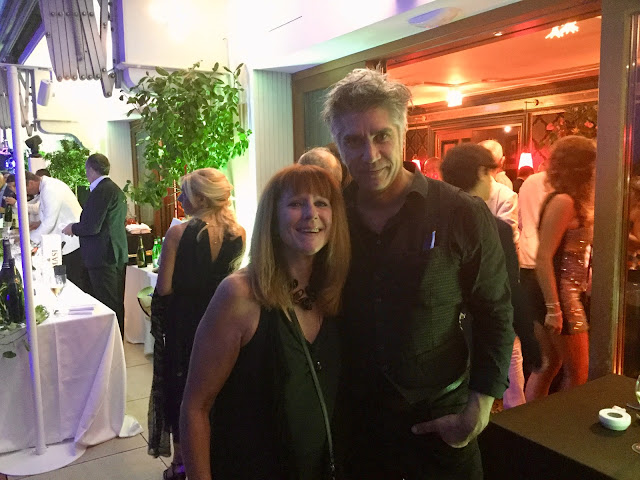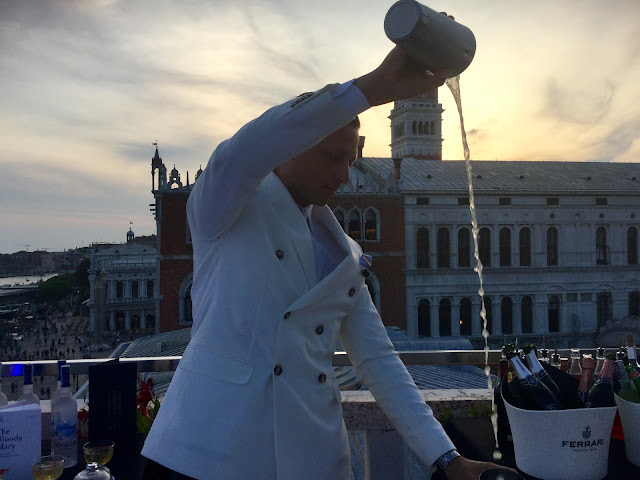 |
| MARRIAGE STORY photo call - Laura Dern, Noah Baumbach, Scarlett Johansson, Adam Driver Photo courtesy of La Biennale di Venezia - ASAC |
Those of us who have gone through a divorce know how shattering the process is, a real human drama. It is tragic and comedic, devastating and cathartic. Noah Baumbach wrote "Marriage Story" after his divorce from Jennifer Jason Leigh. He didn't know when he first spoke to to Scarlett Johansson about the project that she was going through a divorce, too.
Charlie (Adam Driver) is a theater director, and Nicole (Scarlett Johansson) is an actor from a family of mid-level actors in Los Angeles. They have an eight-year-old son, Henry (Azhy Robertson). Charlie has an experimental theater company in New York, and after Nicole fell in love with him, she left LA to become the star of his company. So Henry has grown up in New York, though the way bi-coastal relationships work, they are often in LA to visit Nicole's wacky family.
Baumbach wrote the film specifically for Johansson and Driver, and also for Laura Dern, who nails it as Nicole's fierce and funny Los Angeles divorce attorney. Alan Alda and Ray Liotta co-star as Charlie's divorce attorneys (one gets fired for being too nice).
 |
| Noah Baumbach |
Later, at the press conference, they were asked about that particular scene -- when you see the movie, you will know exactly which scene it is. Driver said, "Obviously, there is a theme of theater and performance. I am a theater director and Scarlett is an actor. There is something about the theatrics of getting a divorce... you're kind of performing for a judge and the mediators... It felt like theater -- we blocked it out, we talked about where we going to go; it wasn't something we winged. Noah's scripts are very well written and concise... there wasn't a lot of changing things on the day. The words are the words, which also feels like theater to me; working on it felt very much like theater."
Anyone who has a background in theater and film knows how difficult it is to crank up the emotional level in a scene, while, at the same time, remembering to hit the mark. The performance is staged. It is a dance between losing control while knowing exactly what you are doing.
Baumbach elaborated, and said that it was a very technical scene. They blocked it out. He knew when he was going to cut to close ups, and when he needed the actors to stop and hit their marks, or lunge, or turn their heads to the camera. "To have these two actors completely lose themselves and at the same time they are in absolute control... it was such a privilege. It was the most rewarding experience I've had as a director."
 |
| Laura Dern at Marriage Story press conference Photo courtesy of La Biennale di Venezia - ASAC |
The performances are so outstanding, I think everyone will get nominated for Oscars -- Adam Driver and Scarlett Johansson for Best Actor, Laura Dern for Best Supporting and Noah Baumbach for Best Director and Original Screenplay.
Here is an excerpt from a review by Owen Gleiberman of Variety that I like a lot. You should click over and read the whole thing:
...one of the powerful subtleties of “Marriage Story” is that the divorce process, flawed as it is, becomes the vehicle through which Charlie and Nicole confront the underlying reality of their marriage. They go to court, and tear up their lives, all to solve a problem that Charlie, if he was a different sort of man, could have solved in two minutes.
Baumbach’s brilliant screenplay never falters or hits a wrong note. He has come up with smart, witty, saddened, and searching characters whose ability to articulate their feelings is never less than lifelike, and he writes scenes that are like verbal arias."Marriage Story" is also about the eternal battle between New York and Los Angeles, theater and film, subways and cars. It is a battle of lifestyles. Being based in Los Angeles and commuting to New York for work is utterly different than being based in New York and commuting to LA.
I asked some Italian journalists who have never lived in Hollywood and New York and were never married to a director if they liked it as much as I did, and they said yes. Go see it! There are no superheroes. It's a real movie with a real story and real characters, just like the good old days.
Ciao from the Venice Film Festival,
Cat Bauer
Venetian Cat - The Venice Blog













